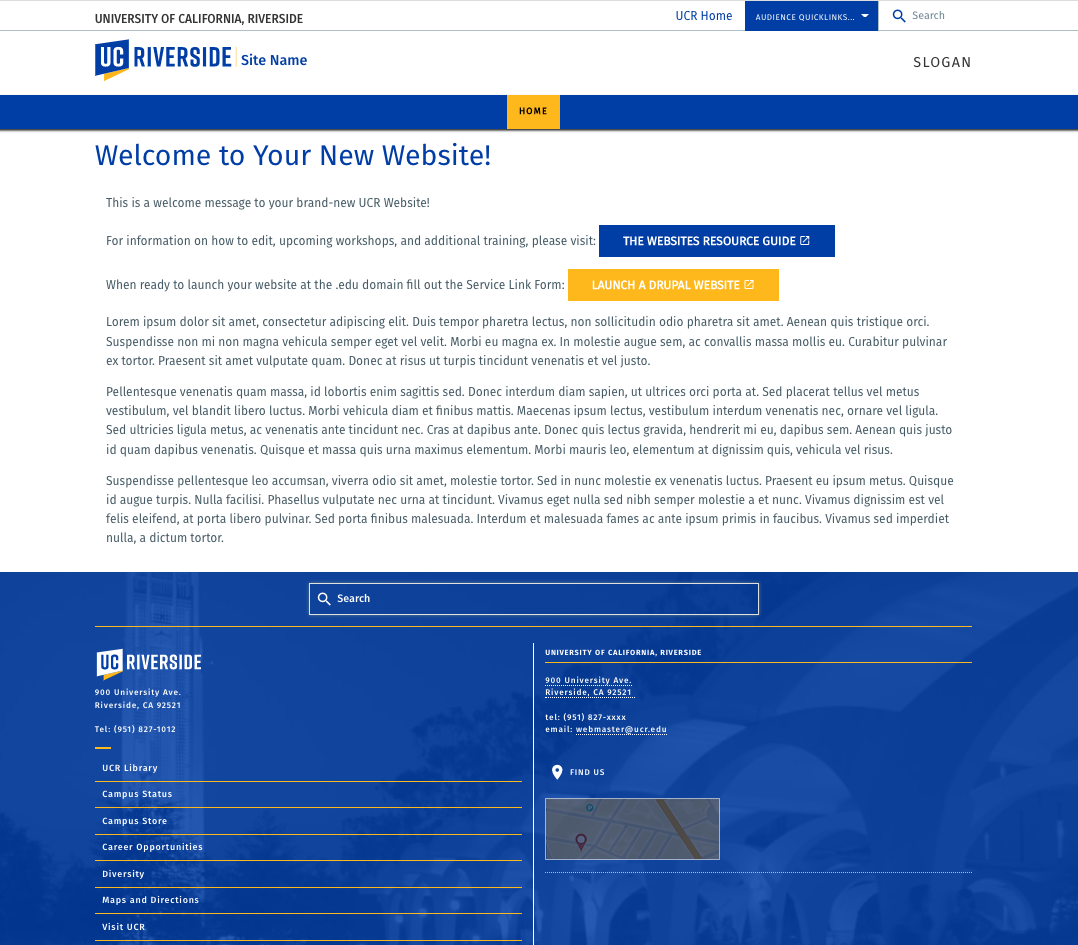About the Service
What is this service?
This content management system offering is based on the Drupal 9 software and is hosted with Pantheon, a cloud based service. It provides an easy way for users across campus to manage their own websites. No coding knowledge is necessary. It also allows University Communications to oversee the brand and make a consistent browsing experience across all websites.
The technical overview
UCR’s Drupal environment is hosted by a 3rd party platform called Pantheon. Campus Web Solutions oversees the code base, which gets pushed to all sites. This ensures all sites have the same basic structure and modules. The individual databases are what keeps the sites separate and unique. UCR leveraged this approach to ensure rolling out bug fixes and new enhancements to Drupal could be done simultaneously and as seamless as possible with the flexibility for certain sites to introduce unique modules (pending approval).
The site offering of Drupal is considered a 'closed system'. This means that the data it queries from databases is local only, and not open to allow direct connections to other database sources. This isn’t a limitation of Drupal itself, but a policy set by ITS in that all Drupal development done is focused around the campus as a whole, generally not for specific departments or specific sites.
Features
- Free to use service
- A variety of content types
- A variety of custom blocks to further enhance your site's visual appeal and structure
- Group manager controlled user accounts with various roles
- Ability to update global site settings from the CMS
- Separate Pantheon interface for organizational managers only
What's Included?
There is a standard profile that bundles functionality and theming. This profile is provided to the campus as the Drupal website template. This template is created per University Advancement branding guidelines.
- Header
- Standard UCR Logo to left of site title
- Site title can be edited by a site builder (title has a standard font size, weight, and color)
- Parent organization displayed in all caps above site title in default theme
- Optional audience links on the top right
- Google custom search (option in include site search only)
- Footer
- Site builder can adjust 1, 2, 3, or 4 column footer
- UCR basic information is mandatory, other elements can be removed from footer
- Color and background are standard per design
- Content Types: these are what are used to create pages
- Basic Page - used for any type of content and can be displayed in a number of different layouts (1 column, there are multiple 2 and 3 column layouts to choose from)
- Articles - used for blogs, news stories, and press releases, auto creates an articles listing and optionally can place a teaser of blogs, press-releases, or news stories, on any basic page
- Events - used for event listings, auto creates an events listing page and optionally can place a teaser of events on any basic page
- People Profiles - used to create profiles for people, auto creates a profile listing page
- Local Galleria - used for image gallery pages
- Additional Content Types: FAQ and File Categorization
- Custom Blocks: these are components that can be added to basic pages
- Alerts
- Accordions
- Basic blocks (WYWISWYG editors)
- Bubble grids
- Carousel sliders
- Expanding card grids
- Info card grids
- Local galleria previews
- Tabs
- Teaser callouts
- and more
- Webforms - create complex forms
How it Works
- Review the policies and details of the service
- Verify that your site is eligible for inclusion
- Check to see who is listed as your unit's Organizational Manager
- Familiarize yourself with training documentation
- Submit the site request form.
Once the site request form has been submitted, it will undergo an approval process by the Organizational Manager and ITS. A site, if approved, will have a development URL until ready to launch. This will be true for existing sites that need to transfer to the new platform and for completely new sites. When the site is available, roles will be assigned as requested, and you will be notified of your site and will be able to edit.
